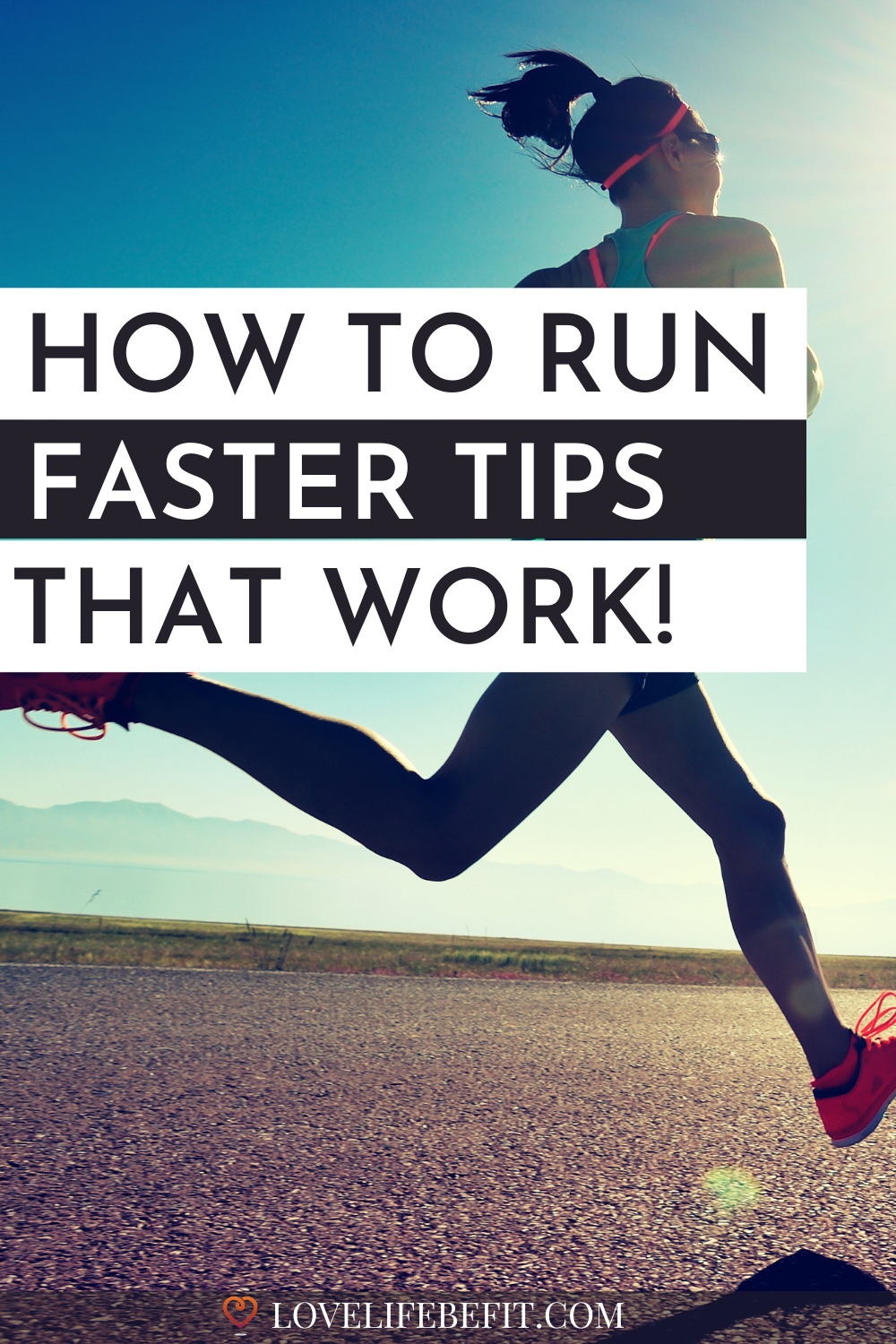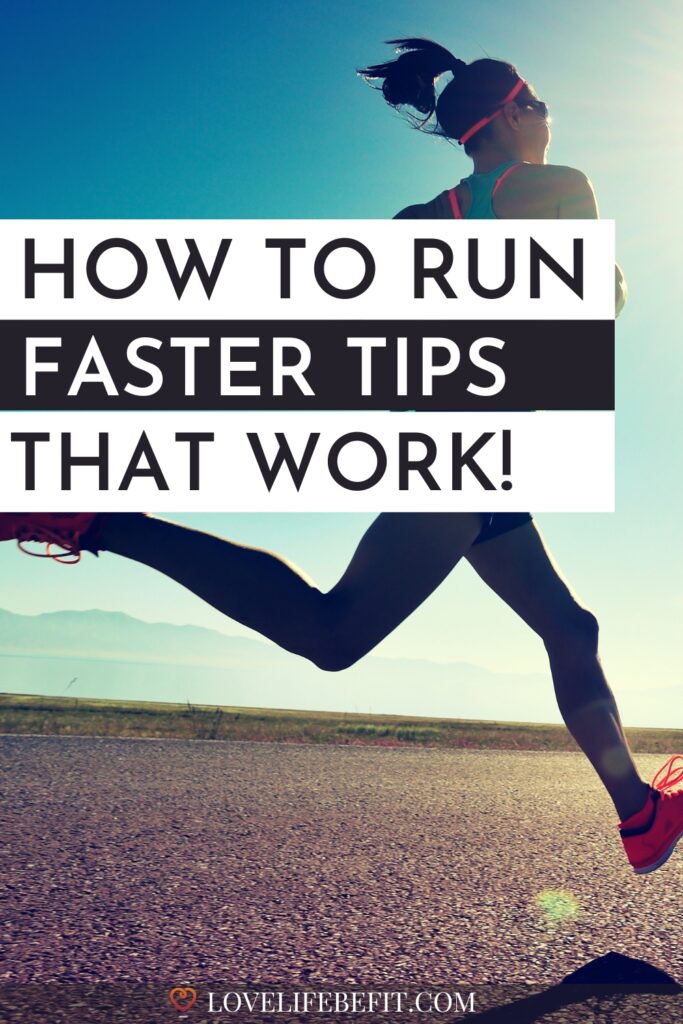How To Run Faster And Ace Your Best Times
If you’re a non-competitive runner look away. Some people can run purely for enjoyment. For the rest of us hunker down for some essential how to run faster tips.
Most runners will agree racing is fun. It may be Type 2 fun, where the pleasure comes from completing the race, not the lung-bursting effort out on the course. But often the latest race is tinged with regret: “If only I could run faster”.
It could be beating a fellow club runner, ranking higher in your age group, or achieving a Boston Marathon Qualifying Time. Everyone has different incentives to improve their running times.

How To Run Faster Tips
A plan for running faster depends on your starting point. If you’re a new runner work on gradually increasing the length of your long run. Aim to run 6 to 7 miles without stopping.
Once you achieve this and you’ve been running for at least 6 months add a speed session to your weekly training. This can be tempo runs, fartlek, intervals, or hill sessions.
Add running-specific strength training to help avoid injury, and fuel your body correctly. Excess weight will slow you down but if you’re underweight, you’ll lack the strength to run fast – so make sure you’re eating enough nutritious food and carbohydrates to fuel your runs.
Lastly, don’t neglect your recovery.
- Evaluate your training – where can you improve?
- Build a solid running base
- Add speedwork – intervals, hill repetitions, fartlek
- Get stronger – core work and strength training
- Find some competition
- Work on your flexibility
- Improve your diet – fuel those runs
- Focus on recovery
- Stay motivated – speed doesn’t improve overnight

What Type Of Runner Are You?
There isn’t a one-size-fits-all training plan for running faster. Everyone is at different starting points with varying abilities.
Of course, this is obvious but it’s easy to get the wrong idea. Launch into speedwork when your body isn’t ready, and you can set your training back months with an unwanted injury.
Work your way through these next sections and be honest with yourself. There’s no point kidding on you’re a regular runner if your training runs never last beyond the first week in January!
Are You A Beginner Runner?
You’ve just started running and you’re oozing with enthusiasm. Maybe you’ve just completed your first 5K race and next time you’d love to move up the results list.
I hate to curb all that positive energy but we need to put the brakes on.
Learning how to run faster involves playing the waiting game. Much of the advice in this post will be too much too soon for a new runner.
As a beginner runner, the first step is to build your base. Here the focus is on building a solid running habit over your first 6 to 12 months.
At this stage of your running, the goal is to run further. Train for a 10K race by running 3 to 4 times a week and gradually increasing the length of your weekly long run until you can comfortably run 6 -7 miles without stopping.
The golden rule is no more than 10% extra mileage per week. You’re aiming for a strong runner’s body that’s resilient to injury.
Gradually add a few hills and work on your core strength. A strong core will improve your running form and help your running speed. These exercises are a good place to start.

Do You Run Regularly?
Let’s be realistic here – there’s no point talking about how to run faster if you’re not putting in the training. To be a faster runner, you need a good running base.
The number of miles you run per week largely depends on your running goals. I’m a big believer in less is more if you want to stay injury-free.
However, running faster will never happen off a sporadic amount of training. It’s important to develop a regular training schedule and everyone’s schedule will look different. It could be running 3 times a week for a 5 to 10K runner or up to 6 times a week for someone tackling a marathon.
While cross-training can ease the load on your legs and help prevent injury, you still need to run regularly if you want to run faster.
Be honest with yourself. If you’re serious about becoming a faster runner, you need to commit to your running goals.
What Are Your Goals?
Are you an ultra-runner? Or a track athlete? Looking to run a fast marathon, or nail a sub-25 minute 5K? Your target running speed will depend on your running history, gender, age, and typical running distance.
Most runners will benefit from running a mile faster. If you have the ability to run a mile at a good pace, running a slower pace for longer runs will seem easier.
Your approach to running faster depends on the end goal. Targeting a fast marathon and a typical training schedule includes tempo runs and 800m intervals. Working on your 5K time, strides, fartlek sessions, and 400m repeats are more appropriate.
Are All Your Runs At The Same Pace?
I get it. It’s a lot easier to just “go for a run”. Lace up those trainers and head off at a comfortable pace. It’s a safe bet that the majority of runners take this approach to their training.
Many runners will vary their running distance and route, but all their runs are at the same pace.
This approach has its place. I’ve used it at times when I’m struggling to run AT ALL. I’ve even adopted running 5 miles a day to get out of a motivational rut.
It’s just that steady-paced running has its limitations. You can only improve your running by working on your speed.
If all your runs are “steady”, it’s time to start mixing things up. Start by adding one speed session a week. It could be running hills, interval repeats, or a fartlek session.
Fartlek is an unstructured speed session. The word is Swedish for speed play and that’s your approach to the session. You play with your speed mixing up bursts of fast running with running at a slower recovery pace.
The idea is to keep running continuously and run to feel. Run faster when your body feels ready and slower when your burst of speed runs out of steam. It feels good to run a fartlek session on undulating trails.
Try not to get carried away when you add speed sessions to your training plan. Ease into speed training gently especially if you’re injury-prone or an older runner. Aim to have a solid strength-building regime in place before you start running hill repeats and intervals.

How Strong Are You?
Running isn’t just about running. At least not if you want to be a faster runner. These hard speed sessions can take a toll on your body. Mitigate the risk of injury by increasing repetitions and intensity gradually – and by strength training.
Most injuries stem from muscle imbalance. Causes vary – but typically it’s strong quad muscles combined with weak glutes and hamstrings, tight hip flexors, or having one dominant and one weaker leg.
Before you check into your local gym, note that strength training needs to be running-specific. Try these must-do bodyweight exercises for runners!
Yoga is an excellent help but to be sure you’re targeting all the right areas, add strength training sessions designed for runners into your training program.
How Badly Do You Want To Be A Faster Runner?
Running fast isn’t easy. All runners, especially beginners, can become faster runners with the right speed sessions. But at some point, just doing the training sessions won’t be enough.
It takes guts to be a faster runner.
- Showing up for races when you know you’ll be at the back of the pack or even last.
- Training with runners who are better than you and having to dig deep to keep up.
- Having the will and mindset to keep on pushing both in your speed training sessions and in the later stages of a race.
Maximum effort in a race can feel euphoric, but it also hurts!






